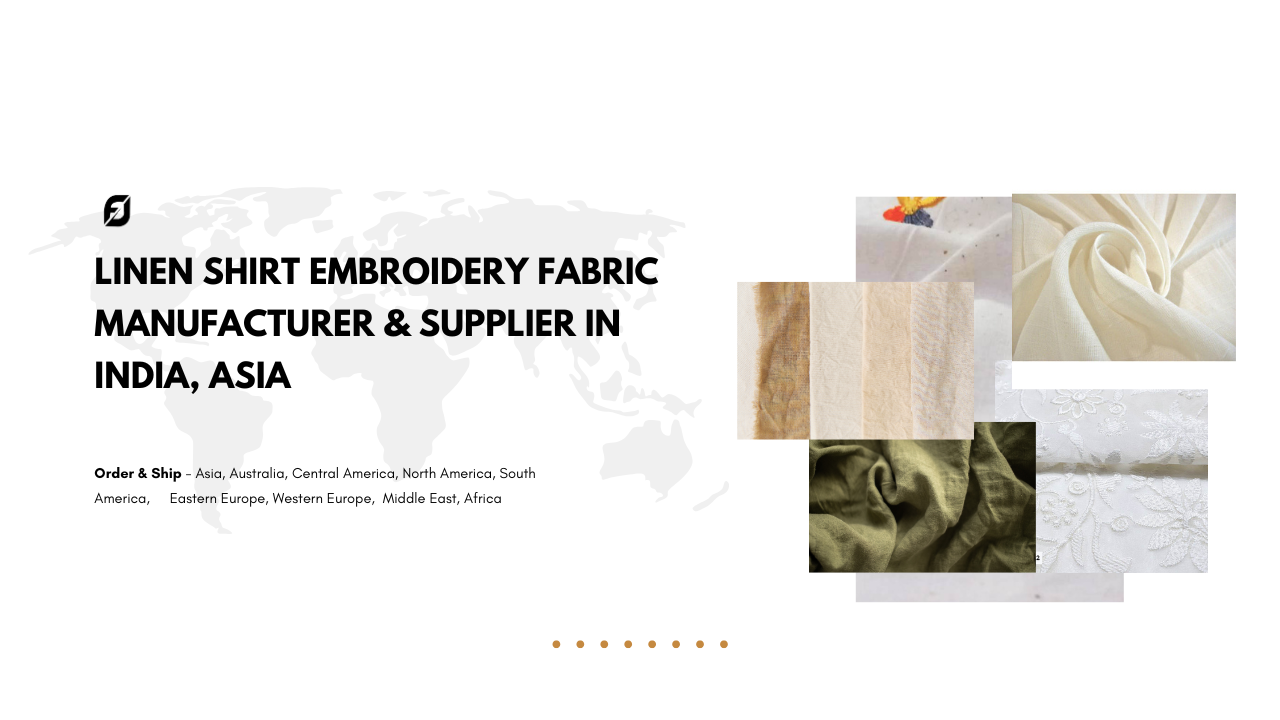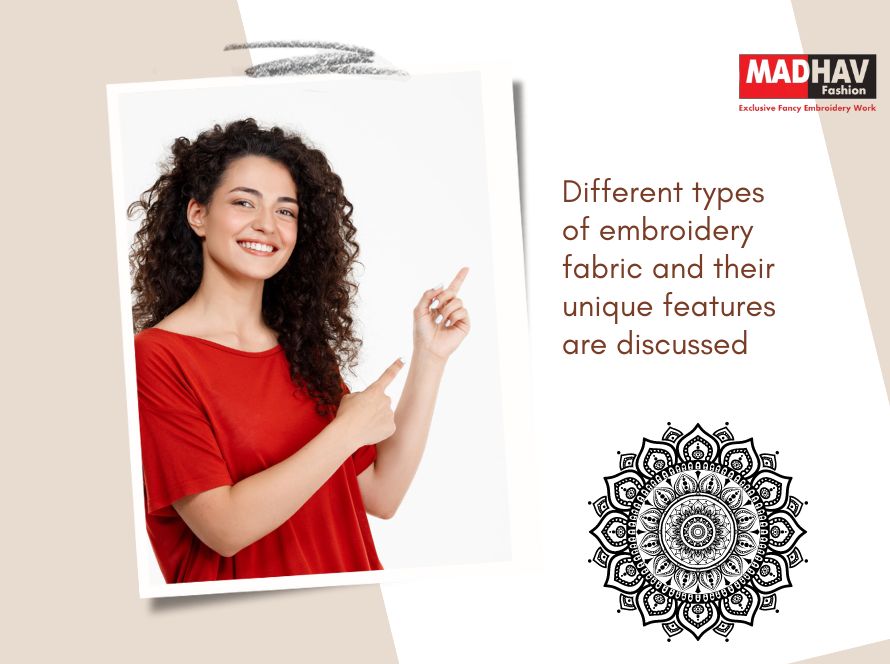Chikan embroidery is a traditional craft from Lucknow, India, characterized by its intricate and delicate patterns.
These patterns, or motifs, are often inspired by nature and include designs like flowers, leaves, and vines. The motifs are created using a variety of stitches, including backstitch, chain stitch, and hemstitch, resulting in a textured and elegant fabric.
Chikan Embroidery Motifs Fabric
Uses of Chikan Embroidery Motifs
Chikan embroidery motifs are versatile and can be used in various ways. They are predominantly used in garments, but their application is not limited to clothing. Here are some popular uses:
- Garments: Chikan embroidery is widely used in making traditional Indian wear like kurtis, sarees, salwar kameez, and lehengas. These garments are cherished for their aesthetic appeal and elegance.
- Home Decor: The motifs are also used in home decor items such as cushion covers, tablecloths, and bedspreads. They add a touch of sophistication and cultural heritage to any living space.
- Accessories: Chikan embroidery motifs can be found on accessories like scarves, stoles, handbags, and even footwear, enhancing their visual appeal.
Types of Garments Made with Chikan Embroidery Motifs Fabric
Chikan embroidery is incredibly versatile, allowing for the creation of various types of garments:
- Women’s Wear: Traditional Indian attire like sarees, anarkalis, lehengas, kurtis, and dupattas. Contemporary fashion has also embraced Chikan embroidery, incorporating it into dresses, tunics, tops, and skirts.
- Men’s Wear: Chikan embroidery is used in creating elegant kurtas, sherwanis, and shirts for men. The subtle yet intricate designs add a touch of refinement to men’s fashion.
Fabric Choices for Chikan Embroidery
Chikan embroidery motifs can be created on a variety of fabrics. The choice of fabric often depends on the intended use of the garment or item:
- Cotton: This is the most common fabric used for Chikan embroidery due to its breathability and comfort, making it ideal for summer wear.
- Silk: For more formal or festive occasions, silk is preferred. It adds a rich and luxurious feel to the embroidered motifs.
- Georgette and Chiffon: These lightweight fabrics are popular for making sarees, lehengas, and anarkalis, providing a flowy and elegant look.
- Linen: Another comfortable fabric choice, linen is used for both casual and formal wear, offering a blend of comfort and style.
Madhav Fashion: Leading the Way in Chikan Embroidery Motifs Fabric
Madhav Fashion stands out as the largest manufacturer of Chikan embroidery motifs fabric in Asia. Renowned for their commitment to quality and innovation, Madhav Fashion has earned a reputation as the most popular supplier of these exquisite fabrics worldwide. They offer a wide range of Chikan embroidery motifs, catering to both traditional and contemporary fashion needs.
Their extensive collection includes fabrics suited for various garments, ensuring that designers and fashion enthusiasts have access to the finest materials for their creations. Madhav Fashion’s dedication to preserving the art of Chikan embroidery while embracing modern trends has made them a trusted name in the industry.
Chikan embroidery motifs fabric is a testament to the timeless beauty of traditional craftsmanship. Whether used in women’s or men’s fashion, home decor, or accessories, these motifs add elegance and sophistication to any creation. With manufacturers like Madhav Fashion leading the way, the legacy of Chikan embroidery continues to thrive, captivating fashion enthusiasts around the world.
—————————————
FAQs on Chikan Embroidery Motifs Fabric
1. What is Chikan Embroidery Motif and its significance?
Chikan embroidery motifs are intricate designs that originated in Lucknow, India. These motifs are traditionally inspired by nature, featuring elements such as flowers, leaves, and vines. The designs are created using a variety of stitches, including backstitch, chain stitch, and hemstitch, resulting in a textured and elegant fabric. Chikan embroidery holds cultural and historical significance, as it has been a part of Indian textile heritage for centuries. The craft is renowned for its delicate and detailed work, symbolizing sophistication and elegance. It has evolved over time, adapting to modern fashion trends while preserving its traditional essence.
2. How can Chikan Embroidery Motifs be used?
Chikan embroidery motifs are versatile and can be used in various applications. Primarily, they are found in garments such as sarees, kurtis, salwar kameez, and lehengas. These motifs enhance the aesthetic appeal of traditional Indian wear. Beyond clothing, Chikan embroidery is also used in home decor items like cushion covers, tablecloths, and bedspreads, adding a touch of elegance and cultural heritage to living spaces. Additionally, accessories such as scarves, stoles, handbags, and footwear often feature Chikan embroidery motifs, making them visually appealing and unique.
3. What types of garments can be created with Chikan Embroidery Motifs Fabric?
Chikan embroidery motifs fabric is incredibly versatile, allowing for the creation of a wide range of garments. For women, traditional Indian attire like sarees, anarkalis, lehengas, kurtis, and dupattas are commonly adorned with Chikan embroidery. Contemporary fashion has also embraced these motifs, incorporating them into dresses, tunics, tops, and skirts. For men, Chikan embroidery is used to create elegant kurtas, sherwanis, and shirts. The subtle yet intricate designs add a touch of refinement to men’s fashion, making it suitable for both casual and formal occasions.
4. What are the best fabrics for Chikan Embroidery Motifs?
Chikan embroidery motifs can be created on various fabrics, depending on the intended use of the garment or item. Cotton is the most common fabric used for Chikan embroidery due to its breathability and comfort, making it ideal for summer wear. For more formal or festive occasions, silk is preferred, adding a rich and luxurious feel to the embroidered motifs. Lightweight fabrics like georgette and chiffon are popular for making sarees, lehengas, and anarkalis, providing a flowy and elegant look. Linen is another comfortable fabric choice, used for both casual and formal wear.
5. Can Chikan Embroidery Motifs Fabric be used in men’s fashion?
Yes, Chikan embroidery motifs fabric is widely used in men’s fashion. Traditional Indian garments such as kurtas, sherwanis, and shirts often feature Chikan embroidery. The subtle yet intricate designs add a touch of refinement and elegance to men’s attire, making it suitable for both casual and formal occasions. Chikan embroidery in men’s fashion is appreciated for its understated beauty and cultural significance. The craft has adapted to modern trends, offering a variety of styles and designs that appeal to contemporary fashion tastes.
6. What makes Madhav Fashion the leading manufacturer of Chikan Embroidery Motifs Fabric?
Madhav Fashion is renowned as the largest manufacturer of Chikan embroidery motifs fabric in Asia. Their commitment to quality and innovation sets them apart in the industry. Madhav Fashion offers an extensive collection of Chikan embroidery motifs, catering to both traditional and contemporary fashion needs. Their fabrics are known for their fine craftsmanship and durability, ensuring that designers and fashion enthusiasts have access to the best materials for their creations. Madhav Fashion’s dedication to preserving the art of Chikan embroidery while embracing modern trends has earned them a reputation as a trusted and popular supplier worldwide.
7. How has Chikan Embroidery evolved over time?
Chikan embroidery has evolved significantly over time, adapting to changing fashion trends and consumer preferences. Originally, Chikan embroidery was done on white cotton fabric using white thread. Today, it is available in a variety of colors and fabrics, including silk, georgette, chiffon, and linen. Modern Chikan embroidery incorporates contemporary designs and patterns, appealing to a broader audience. Despite these changes, the traditional essence of the craft has been preserved, maintaining its cultural and historical significance. This evolution has helped Chikan embroidery remain relevant and popular in the global fashion industry.
8. Why is Chikan Embroidery considered timeless?
Chikan embroidery is considered timeless due to its intricate and delicate designs that have remained popular across generations. The craft’s cultural and historical significance adds to its enduring appeal. Chikan embroidery motifs are versatile and can be incorporated into various garments and accessories, making them suitable for both traditional and contemporary fashion. The elegance and sophistication associated with Chikan embroidery ensure that it continues to be cherished and admired. Its ability to adapt to modern trends while preserving its traditional essence has contributed to its timeless nature.
9. How does Chikan Embroidery enhance home decor?
Chikan embroidery enhances home decor by adding a touch of elegance and cultural heritage to living spaces. The intricate motifs are used in items like cushion covers, tablecloths, bedspreads, and curtains. These pieces not only serve a functional purpose but also act as decorative elements, elevating the aesthetic appeal of a room. Chikan embroidery in home decor creates a sophisticated and inviting ambiance, reflecting a blend of tradition and modernity. The timeless beauty of the motifs ensures that they remain a popular choice for home decor, adding character and charm to any setting.






